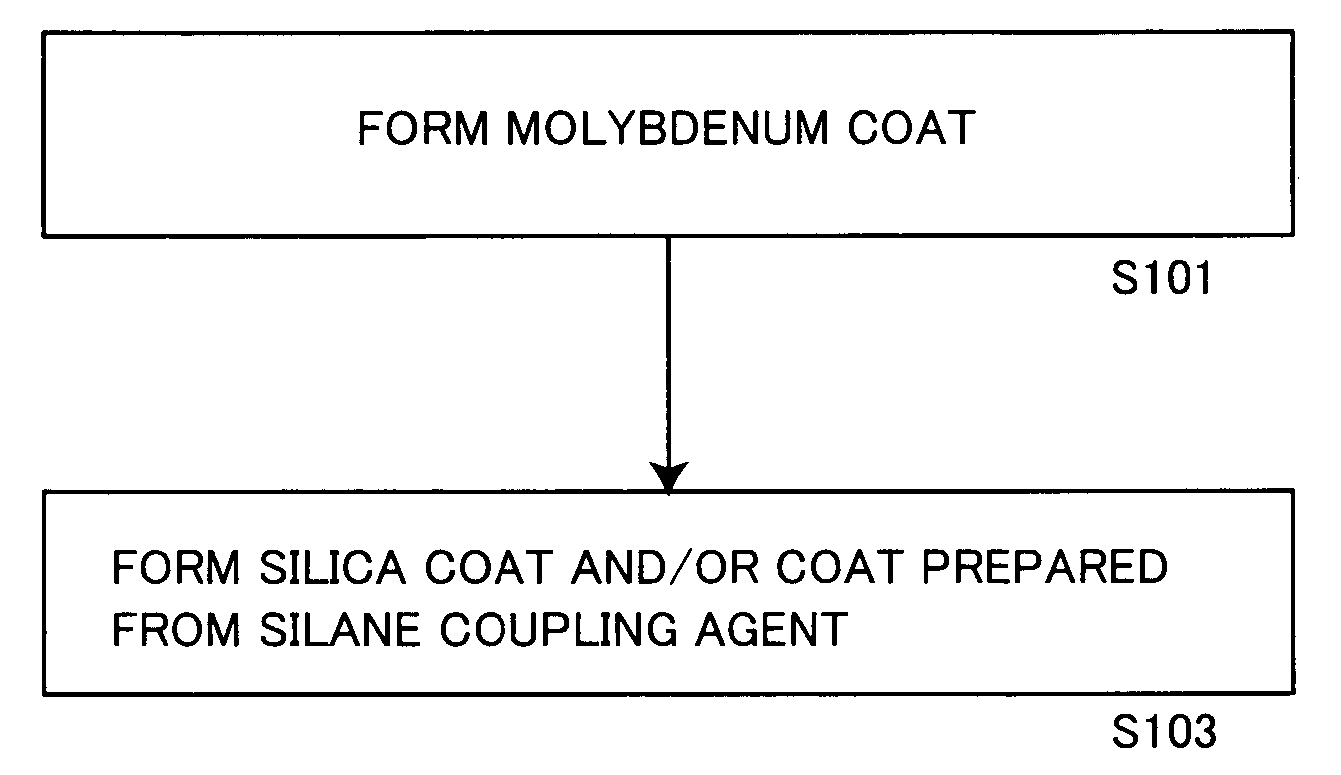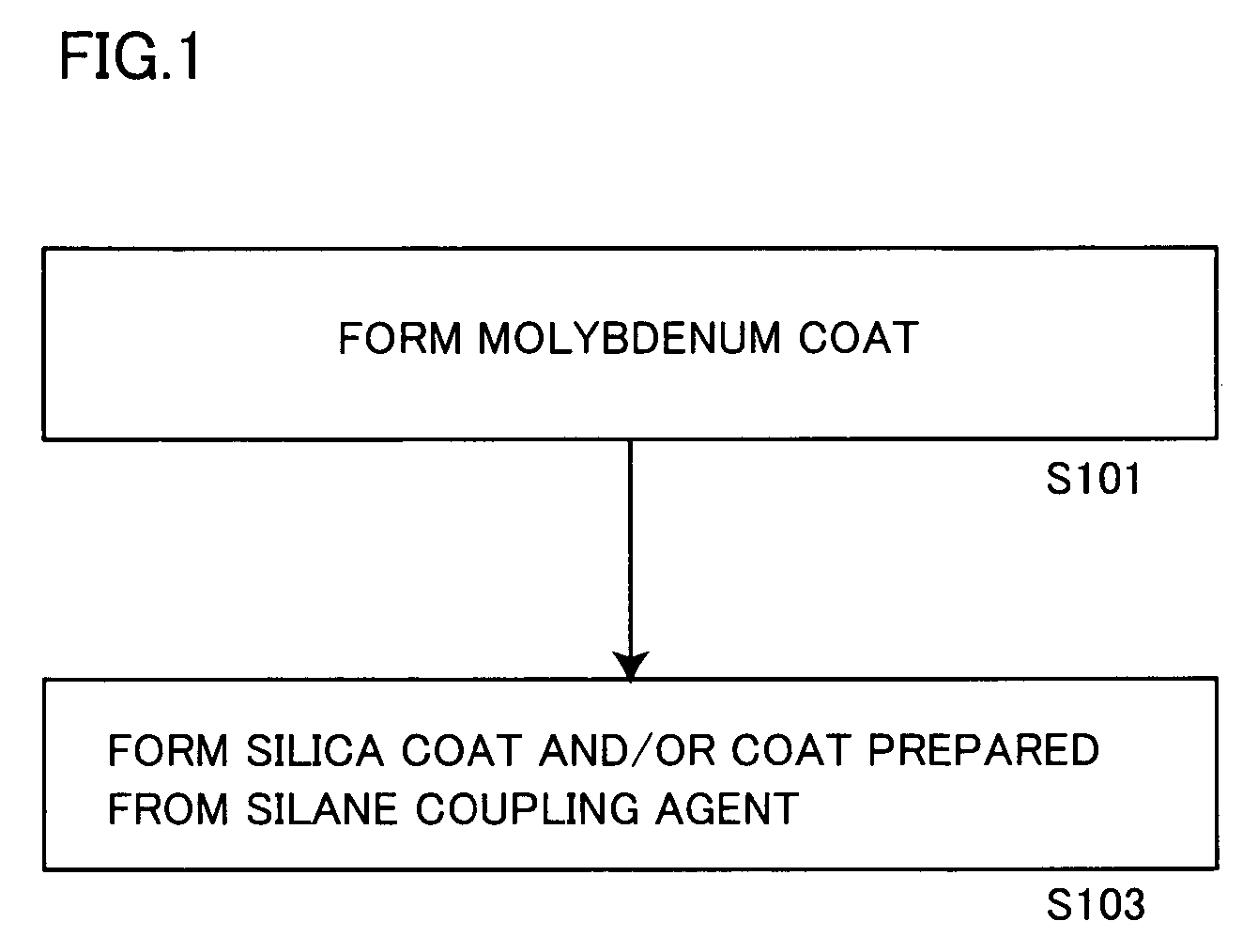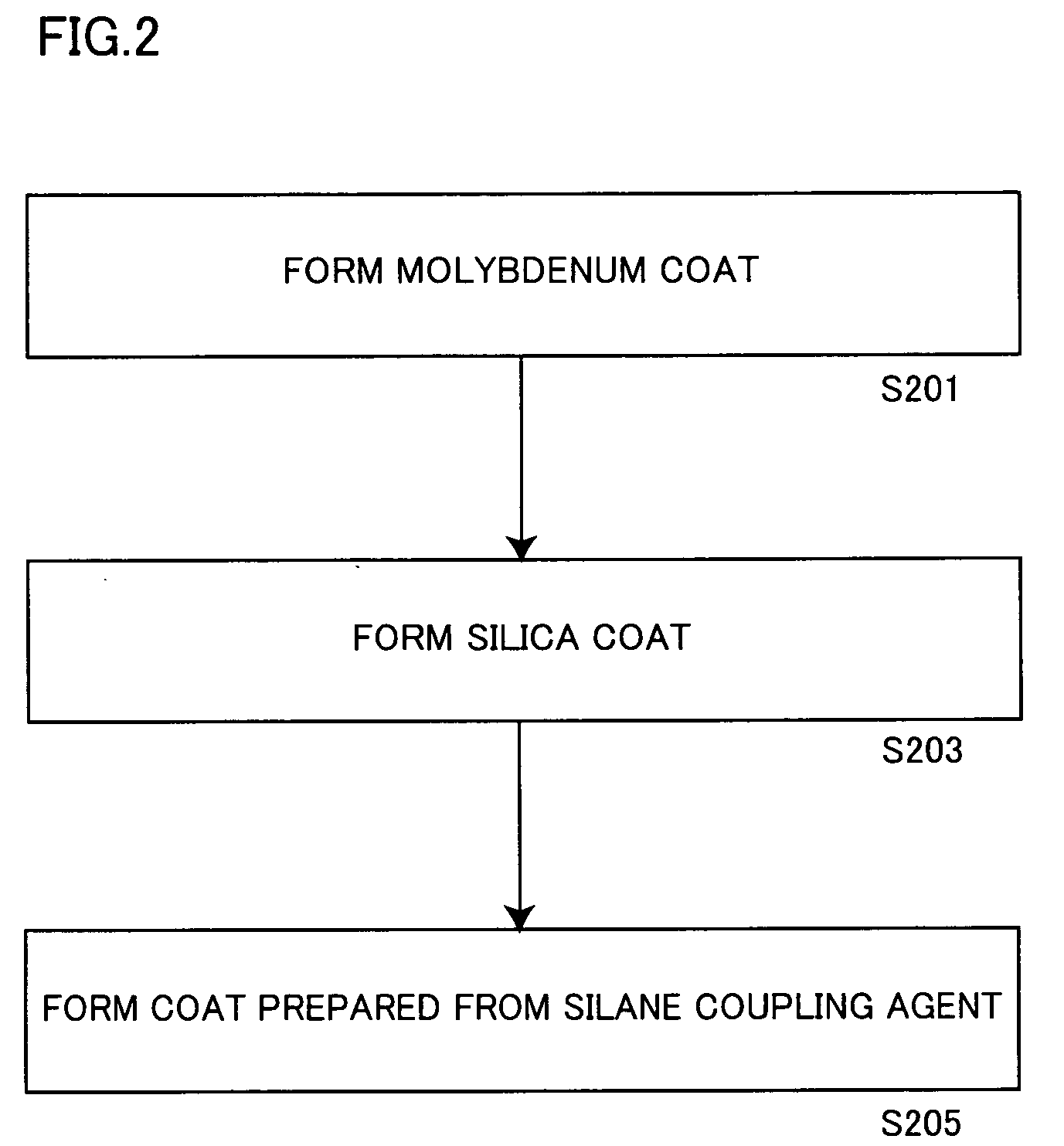Aluminum pigment, process for production thereof and resin composition
- Summary
- Abstract
- Description
- Claims
- Application Information
AI Technical Summary
Benefits of technology
Problems solved by technology
Method used
Image
Examples
example 1
[0185] A solution obtained by gradually adding 0.5 g of metallic molybdenum powder to 10 g of hydrogen peroxide water containing 30% of hydrogen peroxide and making reaction was dissolved in 600 g of isopropyl alcohol, and stirred at 50° C. for 1 hour with addition of 153.8 g (aluminum content: 100 g) of a commercially available aluminum pigment (7640NS by Toyo Aluminum K.K., solid content: 65%).
[0186] Thereafter monoethanolamine was added to the aforementioned slurry for adjusting the pH value of the slurry to 8.5.
[0187] Then, 40 g of tetraethoxysilane (hereinafter abbreviated as TEOS) was added to the pH-adjusted slurry, which in turn was further stirred at 50° C. for 10 hours. The pH value of the slurry was checked every 2 hours in this process, and adjusted to be 8.5 by adding monoethanolamine.
[0188] After termination of the aforementioned reaction, the slurry was solid-liquid separated through a filter, and the slurry containing the obtained aluminum pigment was dried at 105...
examples 2 to 8
[0189] Aluminum pigments according to Examples 2 to 8 were prepared similarly to Example 1.
example 9
[0190] 153.8 g (aluminum content: 100 g) of an aluminum pigment (7640NS by Toyo Aluminum K.K., solid content: 65%) and 3 g of 3-aminopropyl triethoxysilane employed as a catalyst were added to 600 g of IPA, and the mixture was stirred at 50° C. for 1 hour.
[0191] Thereafter monoethanolamine was added to the aforementioned slurry for adjusting the pH value of the slurry to 8.5.
[0192] Then, 30 g of TEOS and 10 g of decyl trimethoxysilane were added to the pH-adjusted slurry, which in turn was further stirred at 50° C. for 10 hours. The pH value of the slurry was checked every 2 hours in this process, and adjusted to be 8.5 by adding monoethanolamine.
[0193] After termination of the aforementioned reaction, the slurry was solid-liquid separated through a filter, and the slurry containing the obtained aluminum pigment was dried at 105° C. for 3 hours for obtaining a powdered aluminum pigment.
PUM
| Property | Measurement | Unit |
|---|---|---|
| Percent by mass | aaaaa | aaaaa |
| Percent by mass | aaaaa | aaaaa |
| Percent by mass | aaaaa | aaaaa |
Abstract
Description
Claims
Application Information
 Login to View More
Login to View More - R&D
- Intellectual Property
- Life Sciences
- Materials
- Tech Scout
- Unparalleled Data Quality
- Higher Quality Content
- 60% Fewer Hallucinations
Browse by: Latest US Patents, China's latest patents, Technical Efficacy Thesaurus, Application Domain, Technology Topic, Popular Technical Reports.
© 2025 PatSnap. All rights reserved.Legal|Privacy policy|Modern Slavery Act Transparency Statement|Sitemap|About US| Contact US: help@patsnap.com



